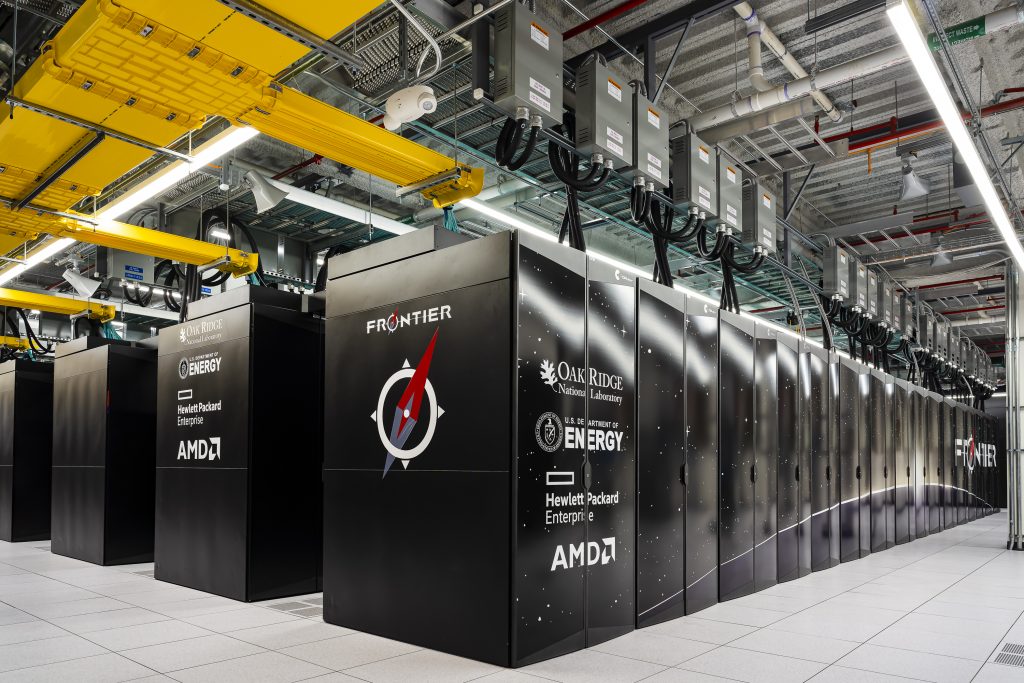Frontier, a supercomputer developed by the US Department of Energy, has once again secured the top spot in the list of the world’s fastest supercomputers. With its groundbreaking performance exceeding one exaFLOPS, Frontier has left its competitors far behind. This article explores the latest rankings, highlights the impressive capabilities of Frontier, and provides an overview of the top-performing supercomputers.
Frontier’s Unmatched Speed and Dominance:
According to the biannual rankings released by TOP500, Frontier has maintained its first-place position as the fastest supercomputer globally. With a staggering speed of 1.194 quintillion floating point operations per second (FLOPS), Frontier surpasses its closest competitor by more than double the computing power. Its unparalleled performance sets a new standard in computational capability and showcases the remarkable strides made in high-performance computing.
The Rivals and Their Progress:
While two supercomputers in the top 10 have shown modest improvements in speed since the previous ranking period, they still fall significantly short of challenging Frontier’s dominance. LUMI and Leonardo, ranking third and fourth respectively, have enhanced their performance levels, but the gap between them and Frontier remains substantial. The top 10 list, in its entirety, remains unchanged from the previous ranking, with the same supercomputers maintaining their respective positions.
Benchmarking and Measurement:
The rankings are determined using the High Performance Linpack (HPL) benchmark, which evaluates how effectively the systems solve dense systems of linear equations. This standardized measurement method ensures fair and accurate comparisons among the supercomputers. Frontier not only secures the top position in terms of raw speed but also takes the lead in artificial intelligence (AI) capabilities, as classified by the HPL-MxP metric.
Geographical Distribution and Power Efficiency:
Among the top 10 supercomputers, five are deployed in the United States, followed by two in China. Finland, Italy, and Japan each house one of the fastest supercomputers. In addition to raw performance, power efficiency is a crucial aspect in supercomputing. Frontier, ranking sixth in power efficiency with 52.592 GFLOPS/W, and LUMI, ranking seventh with 51.382 GFLOPS/W, showcase their prowess in delivering high computational power while optimizing energy consumption.
A Closer Look at the Top 10 Supercomputers of world in 2023:
#1 Frontier: As an HPE Cray EX system, Frontier boasts 8,730,112 cores comprising 3rd Gen AMD EPYC CPUs. It is further enhanced by AMD Instinct 250X accelerators and Slingshot-11 interconnects, achieving an outstanding HPL benchmark score of 1.194 exaFLOPS.
#2 Fugaku: Located in Japan at the RIKEN Center for Computational Science, Fugaku utilizes the Fujitsu A64FX microprocessor and houses 7,630,848 cores. It delivers exceptional performance with a maximum speed of 442.01 petaFLOPS.
#3 LUMI: Based at the EuroHPC center in Finland, LUMI is an HPE Cray EX system powered by AMD processors. With 2,220,288 cores, it achieves a commendable performance of 309.1 petaFLOPS.
#4 Leonardo: Situated in Bologna, Italy, Leonardo is an Intel/Nvidia system featuring 1,463,616 cores and reaching a maximum speed of 238.7 petaFLOPS.
#5 Summit: Operated by Oak Ridge National Laboratory in the United States, Summit, an IBM system, comprises 4,356 nodes equipped with Power9 CPUs,22 cores, and six Nvidia Tesla V100 GPUs. It possesses an impressive total of 2,414,592 cores and achieves a HPL benchmark score of 148.6 petaFLOPS.
#6 Sierra: Similar in architecture to Summit, Sierra is located at the Lawrence Livermore National Laboratory in California. With 4,320 nodes, it features two Power9 CPUs, four Nvidia Tesla V100 GPUs, and a total of 1,572,480 cores. Sierra achieves a remarkable speed of 94.64 petaFLOPS.
#7 Sunway TaihuLight: Developed by the National Research Center of Parallel Computer Engineering & Technology (NRCPC) in China, Sunway TaihuLight is housed in Wuxi. It showcases an impressive 10,649,600 cores, enabling it to achieve a speed of 93.01 petaFLOPS on the HPL benchmark.
#8 Perlmutter: Based on the HPE Cray Shasta platform, Perlmutter is a heterogeneous system that combines AMD EPYC-based nodes and Nvidia A100-accelerated nodes. With 761,856 cores, Perlmutter reaches a speed of 70.87 petaFLOPS, showcasing a notable improvement over the previous year’s performance.
#9 Selene: Selene, an Nvidia DGX A100 SuperPOD, is powered by an AMD EPYC processor and Nvidia A100s for acceleration. It houses 555,520 cores and achieves a speed of 63.46 petaFLOPS. Selene is located in Nvidia facilities in the United States.
#10 Tianhe-2A (Milky Way-2A): Developed by China’s National University of Defense Technology (NUDT), Tianhe-2A features Intel Xeon CPUs and NUDT’s Matrix-2000 DSP accelerators. It possesses an impressive 4,981,760 cores, allowing it to achieve a speed of 61.44 petaFLOPS.
Final Thoughts
Frontier’s exceptional performance and reign as the world’s fastest supercomputer for the third consecutive time solidify its position as a technological marvel. Its unparalleled speed, surpassing the one exaFLOPS milestone, showcases the remarkable advancements in high-performance computing. The top 10 supercomputers on the list highlight the global distribution of computational power, with the United States and China leading the pack. As these supercomputers continue to push boundaries, it is an exciting time for scientific research, artificial intelligence, and computational simulations, opening up new possibilities for innovation and discovery.

